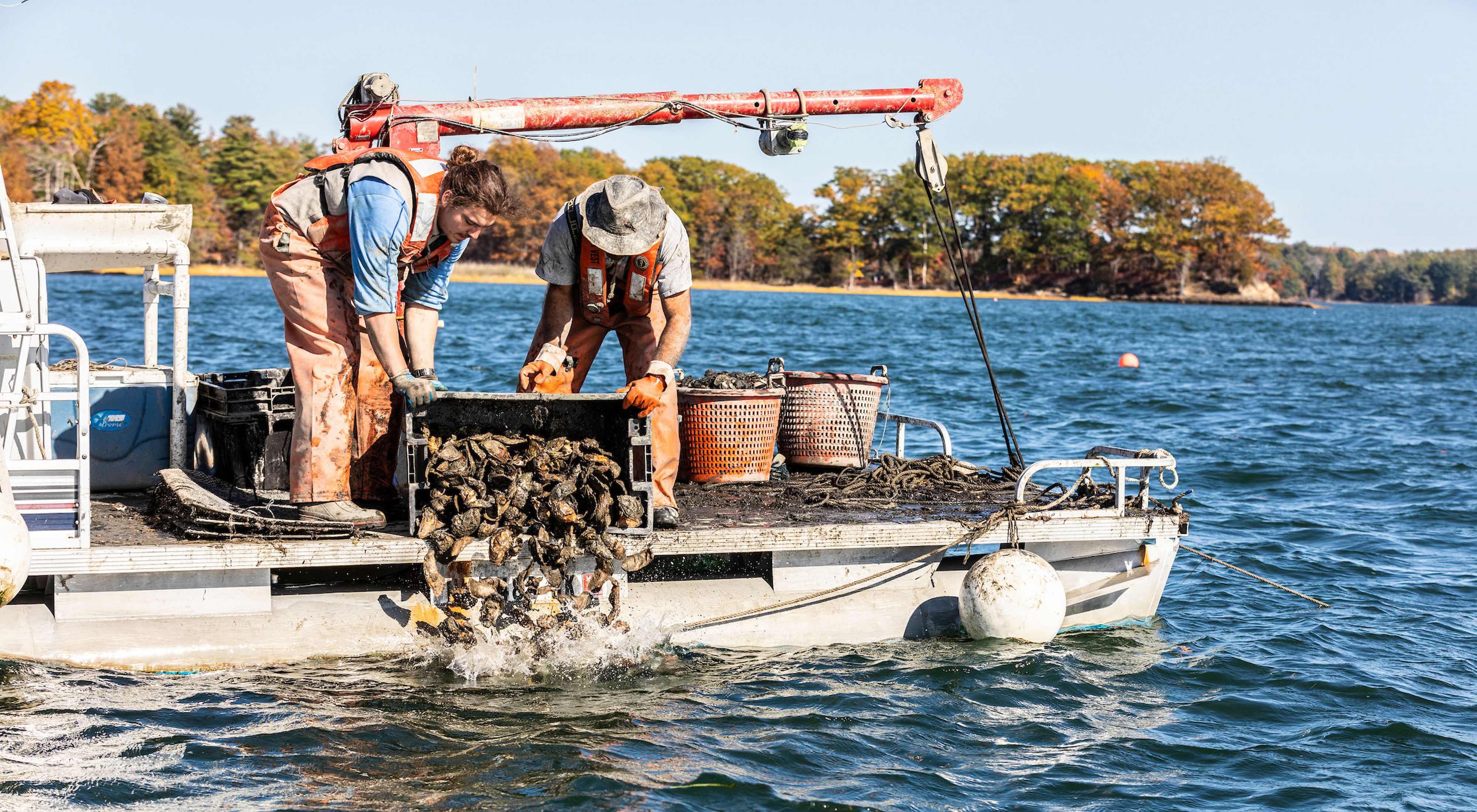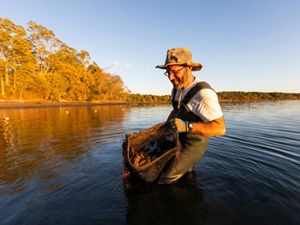Lots of great ideas start around a coffee pot.
In 2018, Alix Laferriere, The Nature Conservancy’s marine director in New Hampshire, led a stakeholder engagement workshop to solicit feedback on a statewide marine restoration plan. During a break after her presentation, she headed to the back of the room, poured a cup of coffee and struck up a conversation with a group of attendees who happened to be local oyster growers.
“They were all in on rebuilding oyster reefs,” says Alix, “because they understand the connection between their industry and the health of our state’s Great Bay estuary.”
Little did they know that the caffeine-fueled idea sparked that day would end up helping oyster reefs near and far—while also saving livelihoods during a global pandemic and crushing economic crisis.
Quote: Alix Laferriere

They were all in on rebuilding oyster reefs because they understand the connection between their industry and the health of our state’s Great Bay estuary.
Right Idea, Right Place, Right Time
Oysters provide many benefits. They clean sediment and filter excess nutrients from the water, and the reefs that are built as generations of oysters accumulate over time help protect estuaries and coasts during extreme weather events. Unfortunately, historic overharvesting and other threats have reduced oyster reefs globally by 85% over the last century, according to a Nature Conservancy study. This loss is a perpetuating cycle. Fewer, smaller reefs mean that baby oysters—each about the size of a grain of sand—perish without a surface to latch onto.
These conditions hold true in New Hampshire. In the 1970s, the Great Bay harbored about a thousand acres of oyster reefs, covering 90% of the bay. Today, the proportion is only around 10%. That’s why in 2019, TNC bought 20,000 oysters from those same local growers who enthusiastically supported reef restoration. And they weren’t just any oysters. Restaurants and consumers want smaller oysters, leaving growers, who function on low profit margins, without a market for larger ones that they don’t sell during peak season. “By purchasing those larger oysters, affectionately called ‘uglies’ here, we were creating a revenue stream for growers while also getting outstanding material for a restoration effort,” says Alix.
The site where the purchased oysters were deployed was carefully monitored. A year later, 70% had survived—an overwhelming success that came to light just as restaurants were closing their doors due to the COVID-19 pandemic. The oyster growers of Great Bay braced for a catastrophic loss of sales. But conservation born of partnership offered a lifeline. “Because of strong relationships and mutually beneficial outcomes, we were ready to quickly take the idea to a broader scale,” says Alix.

Resilience Rooted in Relationships
From that concept piloted in New Hampshire, the Supporting Oyster Aquaculture and Restoration (SOAR) initiative was created. Between 2020 and 2022, SOAR aims to purchase more than 5 million oysters directly from growers across seven states to help rebuild 27 acres of imperiled native shellfish reefs. The effort is a TNC partnership with The Pew Charitable Trusts, the National Oceanic and Atmospheric Administration and the U.S. Department of Agriculture. In total, $2 million in direct payments will support more than 100 shellfish companies and preserve at least 200 jobs.
“The oyster farmers knew we were on their side because we included them in the process,” says Alix. “We share the same goal—healthy marine ecosystems that support a sustainable oyster aquaculture industry and local culture—during times of crisis and every day.”



